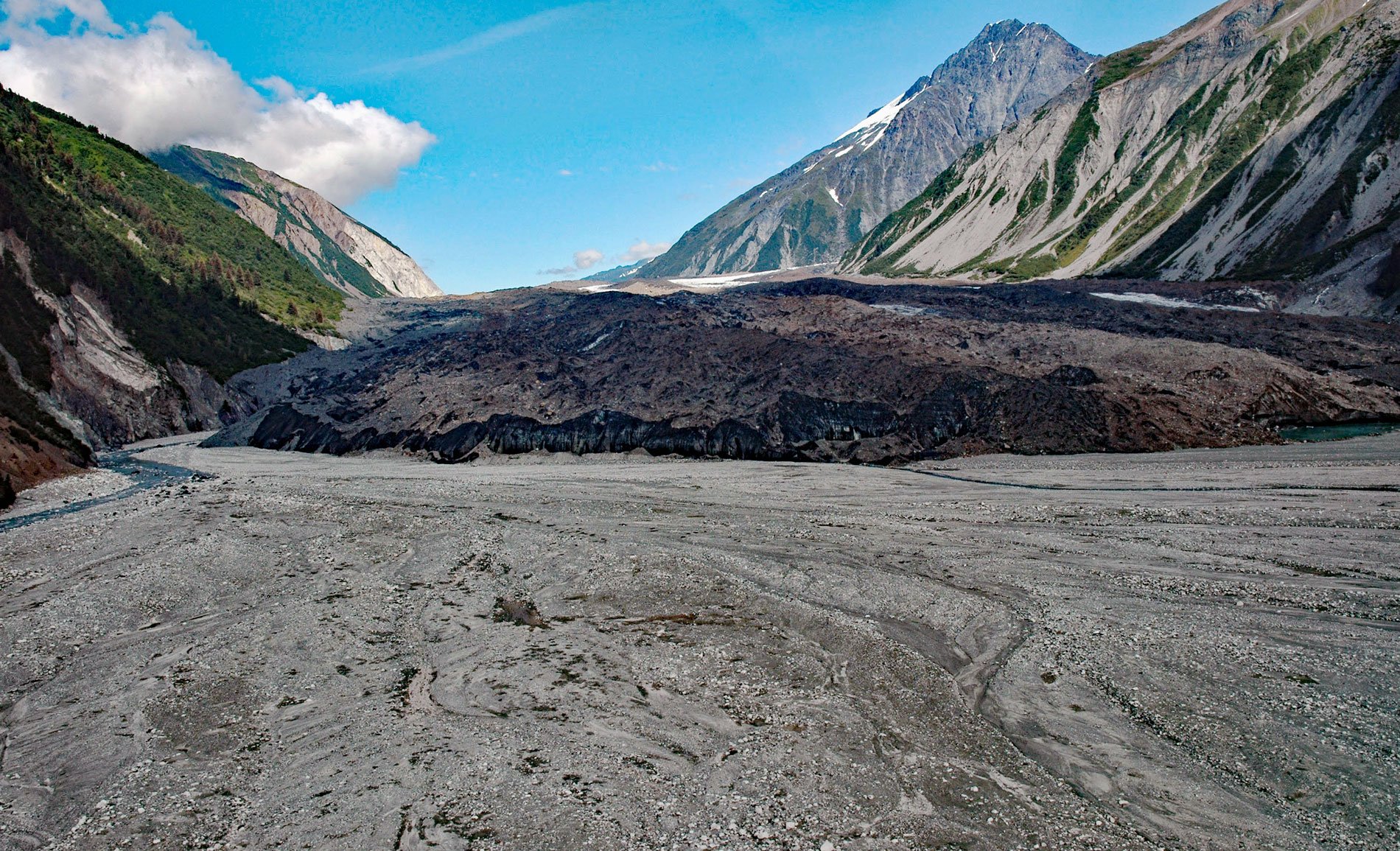Lituya Glacier starts on the south flank of Mount Wilbur in the Fairweather Range and flows west for 8 miles (13 km) to Desolation Valley, and then turns southeast and flows for 2.6 miles (4 km) to Gilbert Inlet at the head of Lituya Bay, about 100 miles (162 km) southeast of Yakutat and 68 miles (110 km) northwest of Gustavus, Alaska. The name Lituya is from the Tlingit and means “lake within the point”.
Lituya Bay was first visited by La Perouse in 1786 who named it “Port des Francais” meaning the “bay of the Frenchmen”. Whalers knew it as Frenchman’s Bay. In 1805, Captain Yuri Lysianskyi of the Imperial Russian Navy called it “L’tooa Bay”. Lituya Bay is in Glacier Bay National Park and Preserve and Gilbert Inlet is on the north shore at the eastern end of the bay. The inlet was named in 1937 for Grove Karl Gilbert who was a geologist with the U.S. Geological Survey and visited Glacier Bay in 1899. The retreat of Lituya Glacier in the last century destabilized the eastern slope of Gilbert Inlet and on July 9, 1958, an earthquake triggered a landslide that generated a megatsunami.
Lituya Glacier flows into Desolation Valley and blocks the flow of meltwater from the Desolation and Fairweather Glaciers to form Desolation Lake with an area of roughly 4 square miles (1036 ha). In August 2020, this glacier dammed lake released a massive volume of water, probably through channels eroded underneath the glacier, and the lake water level dropped 200 feet (61 m). Read more here and here. Explore more of Lituya Glacier here:

